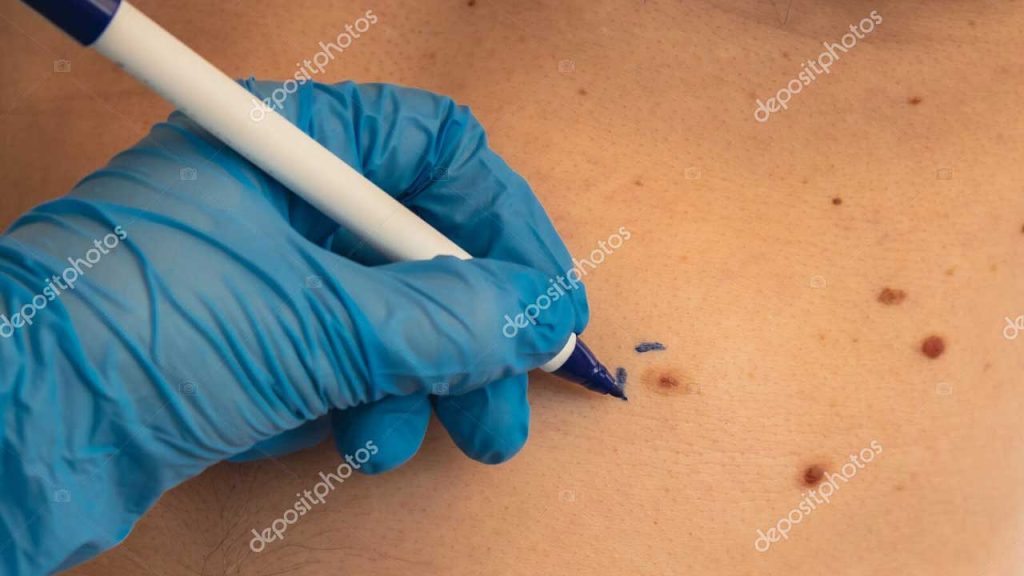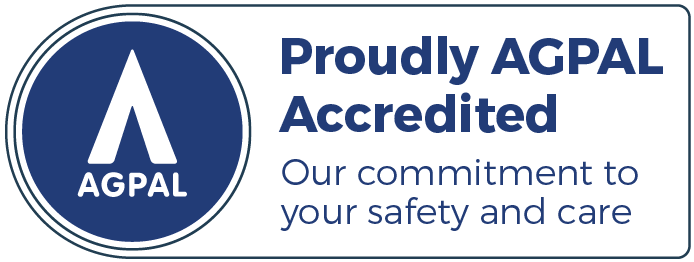Medical and Cosmetic Purposes

A Precise Procedure
Mole removal is a precise medical procedure aimed at eliminating moles that may pose a health risk or cause cosmetic concern. Whether a mole is removed for diagnostic purposes, due to potential or confirmed malignancy, or for aesthetic reasons, the experienced doctors perform mole removal with the utmost precision to minimise discomfort and promote optimal outcomes.
Types of Moles
There are different types of moles, each with different chances of becoming cancerous. These include:
- Congenital Nevi: Moles present at birth. These have a higher chance of developing into melanoma compared to moles that appear after birth.
- Dysplastic Nevi (Atypical Moles): Larger than average moles that can be irregular in shape and colour. Whilst uncommon, they can become cancerous.
- Acquired Moles: Moles that appear during childhood and early adult life. Typically, these moles are not cancerous, however it is important to remain vigilant for changes to moles.
- Melanoma: Although, it is not a mole, melanoma is a serious form of skin cancer that can arise from existing moles. Recognising changes in moles can help in detecting melanoma early.
Mole Removal Procedures
Mole removal at High Street Medical Clinic is conducted using one of several techniques, chosen based on the mole’s characteristics, location, and the reasons for removal. This approach ensures that each patient receives the most appropriate and effective treatment, prioritising safety, minimal discomfort, and optimal cosmetic outcomes. Procedures include:
- Surgical Excision: The mole and a small margin of surrounding tissue are cut out, and stitches are used to close the wound. This method is often used for moles that are suspected to be cancerous.
- Shave Excision: The mole is shaved off flush with the skin using a small blade. This method is typically used for smaller moles that are not suspected to be melanoma.
- Laser Removal: Used for benign moles, laser removal is a non-invasive option that uses light energy to break down the mole tissue.
- Cryotherapy: This involves freezing the mole with liquid nitrogen, causing it to fall off over time. Suitable for non-cancerous moles and some surface-level skin cancers.
When is a Mole Removed?
Moles are removed for both medical and cosmetic reasons:
Medical Reasons: Removal is recommended when moles change in size, shape, colour, or texture, as these changes can be signs of melanoma, the most serious type of skin cancer.
Cosmetic Reasons: Some patients choose to remove moles for aesthetic reasons, especially if they’re located in highly visible areas or if they change in appearance
What to Expect
This is an overview of what to expect when having a mole removed at High Street Medical Clinic:
- Consultation: Evaluation of the mole(s) to determine the best removal method. This includes a discussion about the type of mole, potential risks, and what to expect.
- Removal Procedure: The method of removal (surgical excision, shave removal, laser, or cryotherapy) is selected based on the mole’s characteristics. Local anaesthesia is used to ensure comfort during the procedure.
- Post-Procedure Care: Instructions on caring for the area post-removal to promote healing and reduce the risk of scarring. You may be asked to return for a follow-up appointment to assess the healing process and review the results of any biopsy, if performed.
- Ongoing Monitoring: Continue to monitor your skin for new moles or changes to existing moles.
FAQs
Mole removal is usually performed under local anaesthesia, making the procedure itself painless. You may feel a pinch from the anaesthesia injection, and there might be some discomfort or a sensation of tightness as the area heals.
Avoid applying lotions or makeup to the mole on the day of the procedure. It’s also advisable to wear comfortable clothing that doesn’t rub against the mole site. If the mole is in a hair-covered area, shaving might be required, but consult with your doctor first. Additionally, inform your doctor about any medications you’re taking, as some may need to be paused before the procedure.
Healing times vary depending on the removal method but generally range from a few days to a couple of weeks.
All mole removal methods have the potential to leave a scar, but techniques are chosen to minimise this risk. The appearance of a scar depends on the removal method, the mole’s location, and individual healing processes. Discuss with your doctor should you have any concerns.
Keep the area clean and follow any specific aftercare instructions provided by your doctor. This may include applying antibiotic ointment or a bandage.
Mole removal techniques include surgical, shave, laser and cryotherapy, depending on the mole’s characteristics and location. Read more about these techniques in the section titled ‘Mole Removal Procedures‘.
For mole analysis and removal, book online or call us.







